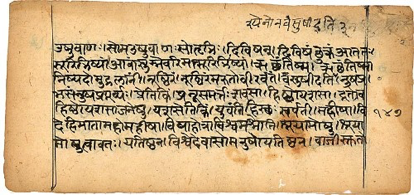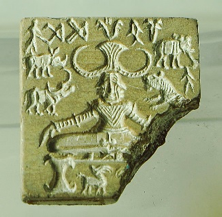The History of Meditation
“Sumer was the first urban civilisation in the historical region of southern Mesopotamia, modern-day southern Iraq, during the Chalcolithic and Early Bronze ages, and arguably the first civilisation in the world with Ancient Egypt and the Indus Valley”.
“Proto-writing in the prehistory dates back to c. 3500 BC. The earliest texts come from the cities of Uruk and Jemdet Nasr and date back to 3300 BC; early cuneiform writing emerged in 3000 BC.”
“Modern historians have suggested that Sumer was first permanently settled between c. 5500 and 4000 BC by a West Asian people who spoke the Sumerian language (pointing to the names of cities, rivers, primary occupations, as evidence), an agglutinative language isolate"(The chronicle of the fall).
“Some of the earliest written records of meditation come from the Hindu traditions of Vedantism around 1500 BCE. These records consist of scriptures called Vedas, which discuss the meditative traditions of Ancient India. Around 500 to 600 BCE, other forms of meditation developed, such as the Taoist in China and the Buddhist in India. From 1000 CE to 1100 CE, the zen form of meditation, called “zazen,” gained popularity in Japan"(George S. Everly, Jr., Jeffrey M. Lating. 2012 p202).
“Vedantism is the beliefs and practices of Vedanta, an orthodox Hindu philosophy emphasising the teaching on contemplation found in the Vedas" (thefreedictionary.com/Vedantism.).
“The Vedas are a large body of knowledge texts originating in the ancient Indian subcontinent. Composed in Vedic Sanskrit, the texts constitute the oldest layer of Sanskrit literature and the oldest scriptures of Hinduism"(Torsten Klimmer, 2018).
The Upanishads are commonly referred to as Vedānta, variously interpreted to mean either the "last chapters, parts of the Veda" or "the object, the highest purpose of the Veda"(ipfs.io, 2016).
Archaeologists, Sir John Marshall and Earnest Mackay in the 1920s, found another recorded sign of meditation. The figure on a seal of a yogi sitting in a typical yoga pose. The excavations of the city Mohenjo-Daro, which dates back to 2,600 B.C. (4,600 years ago). The below seal 420 is Marshall’s proto-shiva and “Siva was and still is, regarded as the Mahayogi” [10] (The British Museum n.d).
Reference
- George S. Everly, Jr., Jeffrey M. Lating. 2012, A Clinical Guide to the Treatment of the Human Stress Response. Springer Science & Business Media
- ipfs.io 2016, Upanishads, viewed 17 March 2019, https://ipfs.io/ipfs/QmXoypizjW3WknFiJnKLwHCnL72vedxjQkDDP1mXWo6uco/wiki/Upanishads.html
- Ozkaya.O 2009, Calming the mind, Freemeditation, viewed 17 March 2019, http://www.freemeditation.com/articles/2009/09/10/calming-the-mind/
- Pubmed.gov n.d., Meditation, viewed 17 March 2019, https://www.ncbi.nlm.nih.gov/pubmed/?term=meditation
- QFG n.d. Event#5461: Summer: first urban ciilization in Mesopotamia,viewed 17 March 2019, The Choronicle of the Fall, https://cof.quantumfuturegroup.org/events/5461
- The British Museum n.d., Indus Valley, viewed 17 March 2019, http://www.ancientindia.co.uk/indus/explore/his03.html
- The free dictionary.com, Vedantism, viewed 17 March 2019, https://www.thefreedictionary.com/Vedantism
- Torsten Klimmer 2018, Transcendental Journeys: A Visionary Quest for Freedom, Omananda Productions ISBN 9783947533008



